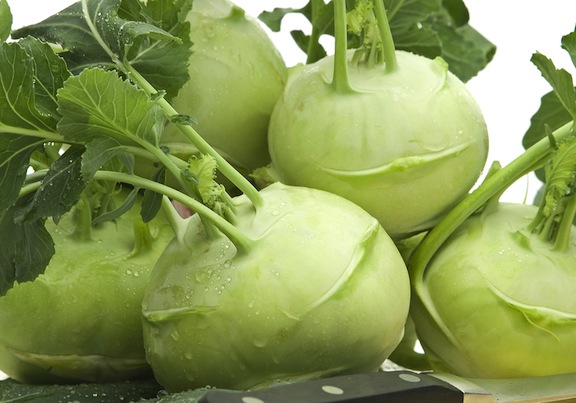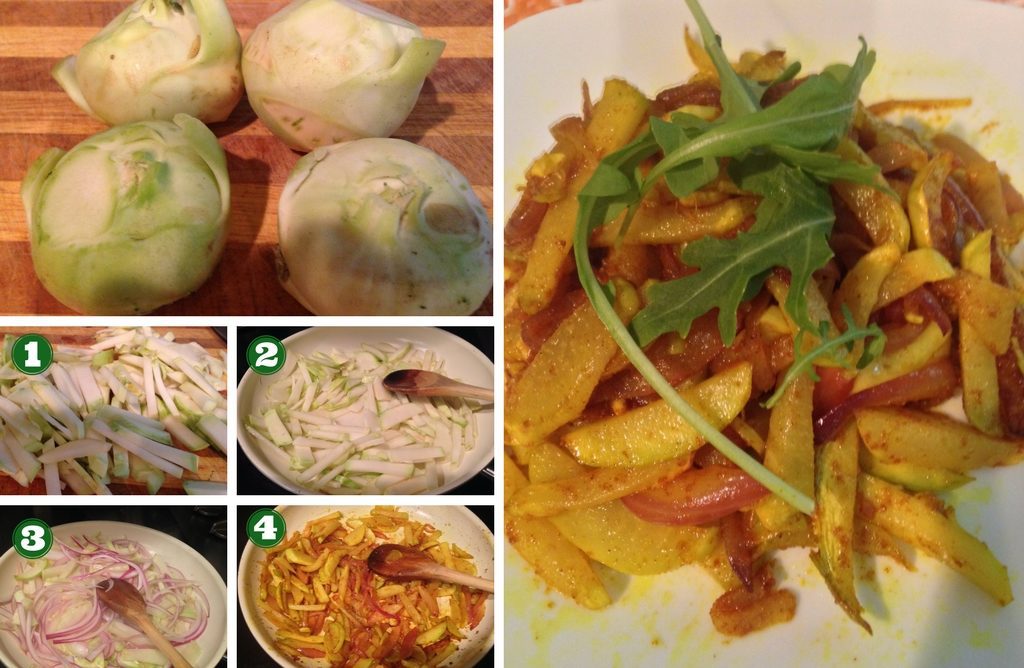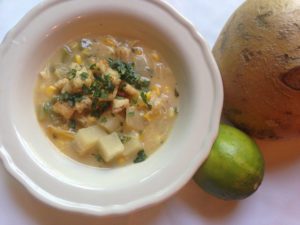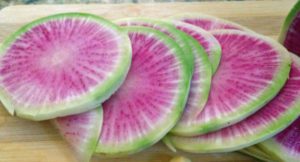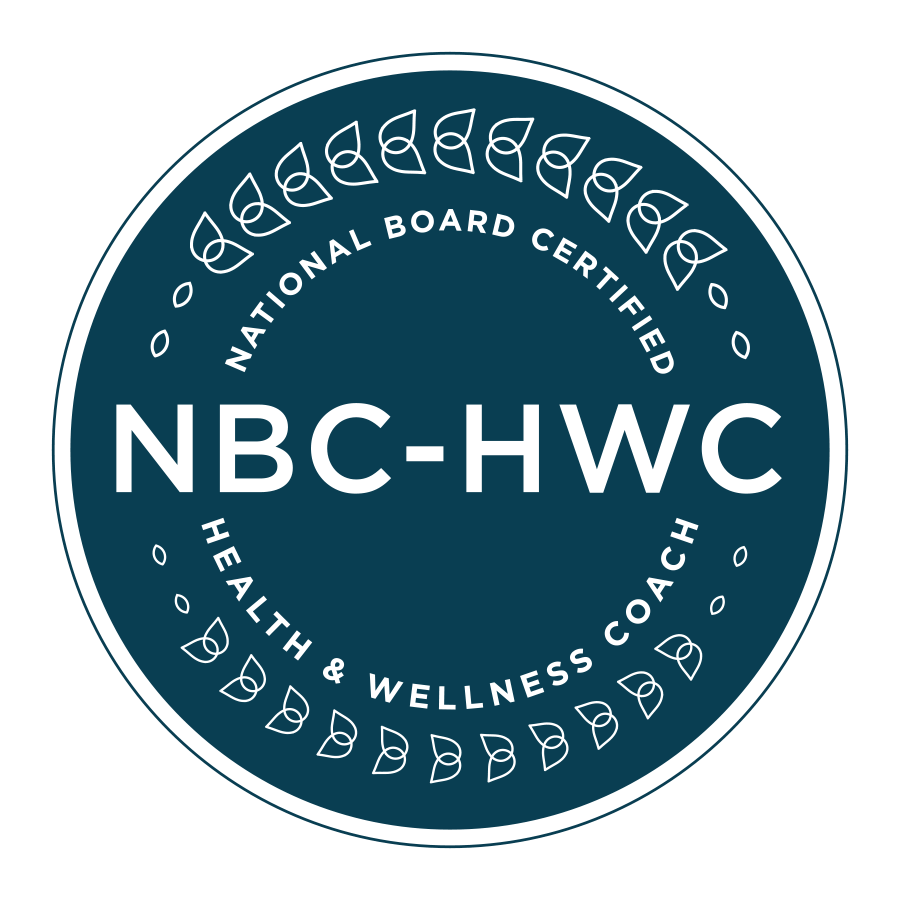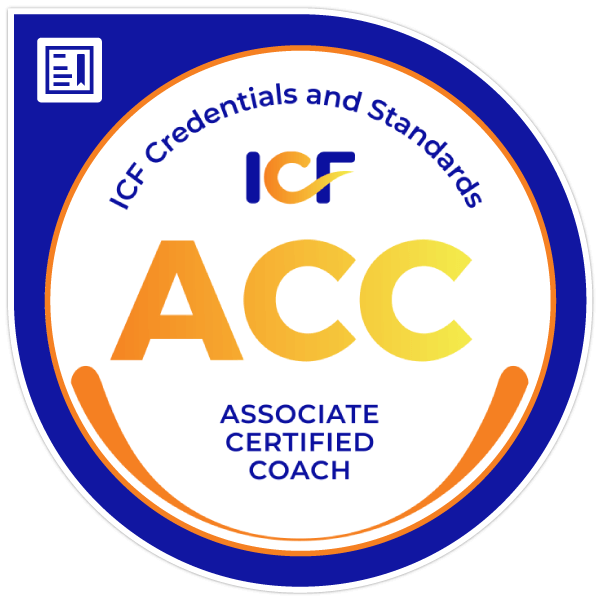It’s amazing that there are so many different vegetables and fruits, yet we limit ourselves to just a few of them. I am a creature of habit. I can eat basically the same food every day. Recently, however, I have been exploring the local farmer’s market. I find it exciting. There are as many different vegetables and fruits as the many nationalities shopping there. A few weeks ago, I decided that my new vegetable would be kohlrabi. Kohlrabi is family to the Cruciferae or Brassicaceae; they are the cabbage family. Just like the brussel sprouts, the broccoli or cauliflower, there is the kohlrabi. Like most of the members of the family, the kohlrabi, which is popular in Germany and India, is also versatile in terms of food preparation and powerful in terms of its medicinal properties.
Kohlrabi is a type of cabbage. It is characterized by the white or purple 20-cm bulb (in diameter) that forms at the base. The bulb lasts for several weeks, but its leaves, which are eaten also, are short lived. The leaves are like turnip greens and can be prepared virtually the same way. The bulb is eaten grated raw in salad, sliced or fried.
Below, I have prepared my kohlrabi as a stir-fry. You will find that the kohlrabi absorbs the flavor of almost anything you cook it with. If you enjoy the fusion of coconut oil and turmeric and curry, then you will love the recipe I have prepared.
Curry-Coconut Kohlrabi Stir-Fry (20 minutes)
4 kohlrabi bulbs
¼ red onion
½ tablespoon turmeric
¾ teaspoon curry
¼ teaspoon cumin
1 tablespoon coconut oil
Dash coarse sea salt (optional)
- Slice kohlrabi bulbs.
- Add coconut oil to pan. When heated, add sliced kohlrabi and stir under medium heat. Allow to cook for about 4 minutes.
- Slice onions. Add onions to kohlrabi. Stir.
- Add turmeric, curry and cumin. Stir, blending in spices.
Kohlrabi has a sweetish taste. Be careful not to overcook it. It should be just tender enough with a little bite.
Medicinal Properties of Kohlrabi
Like most cabbages, the kohlrabi has tremendous therapeutic value. Its leaves are rich in vitamins and minerals. The most significant are magnesium and beta-carotene (provitamin A). The Kohlrabi’s energy source is in the base of the stalk.
Kohlrabi is an anticarcinogenic food. It contains substances capable of preventing the formation of malignant tumors and can even stop their growth. In addition to this medicinal property, kohlrabi has dietary and therapeutic properties as well, such as those described below:
| Composition of Kohlrabi per 100 g of raw edible portion | ||||||
| Protein g | Carbohydrate g | Vitamin A | Folate | Vitamin C mg | Calcium mg | Iron mg |
| 1.7 | 2.6 | 4 | 16.1 | 62 | 24 | 0.4 |
| Source: Encyclopedia of Foods and Their Healing Power, Vol. 2, Pamplona-Roger, M.D. | ||||||
For those suffering from coronary disease and obesity, kohlrabi is an ideal food because its fats are minimal. In spite of their scarcity, the fats have great preventive and healing importance. There are sulfurated substances dissolved in them that are responsible for most of their medicinal action. The Kohlrabi, like most cabbages, is rich in potassium and very low in sodium, which makes it a great value in case of hypertension or fluid retention (edema).
If you have never tried kohlrabi before, why don’t you give it a try? God has given each food unique healing properties. The body is such that we are either fighting a disease or feeding it. Why don’t arm your body with foods that will fight for you!
